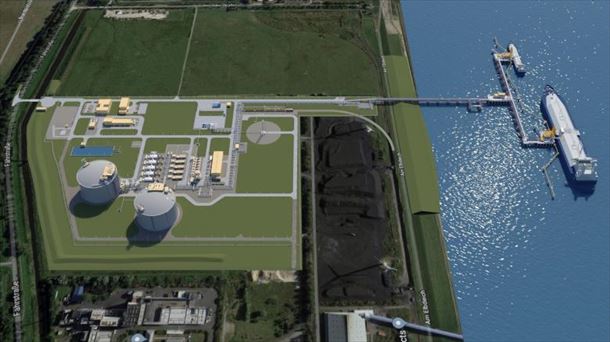On October 4, the Austrian nanosatellite PRETTY is expected to be launched into space aboard a Vega rocket from the European Spaceport in Kourou, South America. As part of ESA’s global environmental and weather observation, it aims to investigate climate change and contribute to sustainability in space. The satellite was developed by Beyond Gravity Austria as prime contractor together with TU Graz and Seibersdorf Labor GmbH for ESA.
“PRETTY”, the fifth Austrian satellite in space and the third built by the Graz University of Technology (TU), is intended to transmit data from an altitude of 600 kilometers that can, on the one hand, contribute to a better understanding of climate change. sustainability in space on the other.
Cubesat weighs five kilograms
With the almost five kilogram cubesat, which consists of three cubes each with an edge length of ten centimeters and is intended to orbit the Earth in a polar orbit, “for the first time we had overall responsibility for an entire space mission,” according to Beyond Gravity Austria director Kurt Kober.
Data on the ice cover on the Earth’s surface
A new type of reflectometer developed by the company, the main instrument of the nanosatellite, is in charge of transmitting data about the ice cover on the Earth’s surface and measuring the exact height of sea level and the intensity of ocean waves.
Height measurements up to decimeter and centimeter range
It allows height measurements down to decimeter and centimeter scales, and the interferometric method is used in space for the first time: “Received signals from the EU navigation satellite Galileo and the US navigation satellite GPS are used to correlate them with signals reflected on The Earth’s surface. This can be used to determine, among other things, the height of waves and ice caps, as well as wind speeds or soil moisture,” says system engineer Andreas Dielacher.
A radiation detector (“SATDOS reference dosimetry platform”) developed by Seibersdorf Labor GmbH is used to measure space radiation, thus providing the basis for determining its effects on satellite electronics. “The measured radiation effects make it possible to draw conclusions about the currently prevailing space weather and the reliability of the electronics in satellites,” says Christoph Tscherne, an expert in the field of radiation resistance.
The first data are expected within two months at the latest
The first data from PRETTY can be expected about one to two months after the rocket launch, it said. The exact time is highly dependent on the course of the “warm-up phase” of the satellite in space. The data is freely available to the public; they are evaluated by an international scientific team.
Bodenstation is operated by TU Graz
The PRETTY (Passive Reflectometry and Dosimetry) ground station is operated by the Graz University of Technology. Manuela Wenger, project manager of the Institute for Communications Networks and Satellite Communications at the Graz University of Technology, explained in an earlier conversation with the APA that you can “contact the satellite four to six times a day” and download both its health status data and scientific data.
Mission designed for one year
The PRETTY mission is designed for a one-year duration in space. However, such satellites can often be used for several years longer, as previous mini-satellites have already shown. The first small Austrian satellites, TUGSAT-1 (TU Graz) and UniBRITE (Uni Vienna), were launched into space in 2013 and are still orbiting the Earth. TUGSAT-1 also transmits data – the satellite is currently still transmitting scientific images of Orion, as the Technical University of Graz said.
A third satellite, “Pegasus” (Wiener Neustadt University of Applied Sciences), followed in mid-2017, and the nanosatellite OPS-SAT (TU Graz) was launched in 2019 at the same time as the ESA CHEOPS space telescope. All small satellites were funded by the climate ministry responsible for the area, either by ESA or from national funds through the research funding agency FFG.
PRETTY was supposed to be launched from Kourou in the spring of 2023 aboard a European ‘Vega C’ rocket, a further development of the Vega rocket. At the end of December, the Vega C went off course during its first commercial flight (the first flight of the Vega C took place in July 2022). Because the Vega-C rocket is not yet operational again, the PRETTY flight will use the Vega rocket, which has been launching light satellites into space since 2012. On October 4, in addition to the Thai Earth observation satellite THEOS-2 and the Triton weather satellite (Formosat-7R), ten ‘secondary payloads’, including PRETTY, will also be launched into space.
Source: Krone
I am an experienced and passionate journalist with a strong track record in news website reporting. I specialize in technology coverage, breaking stories on the latest developments and trends from around the world. Working for Today Times Live has given me the opportunity to write thought-provoking pieces that have caught the attention of many readers.



